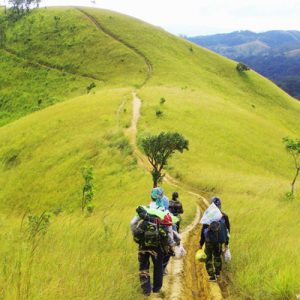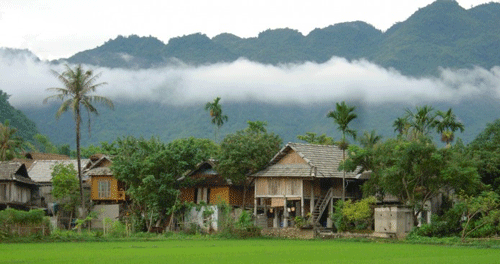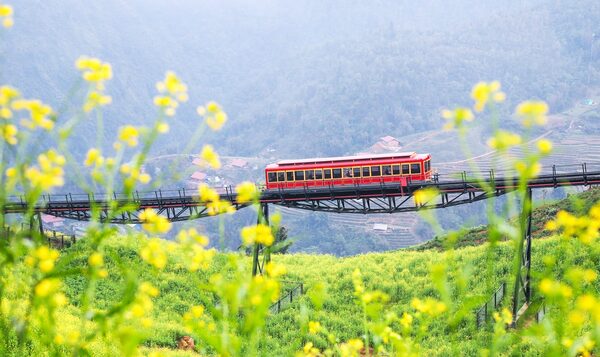Vietnam is known for its breathtaking landscapes, rich culture, and diverse ecosystems, making it a top destination for trekking enthusiasts. There are many reasons to trekking in Vietnam, such as from the towering mountains of the north to the lush jungles in the south. Vietnam trekking offers unforgettable experiences for nature lovers and adventure seekers alike. If you’re considering a trek through Vietnam, here are some essential tips on the best times to go, how to prepare, what to bring, and safety precautions to ensure a smooth and enjoyable journey.
Best Time for Vietnam Trekking
Vietnam’s weather varies greatly from region to region, making it important to plan your trekking trips based on seasonal conditions.
Dry Season (September – April)
The dry season, from October to April, is considered the best time for Vietnam trekking. During these months, the weather is cooler with less rainfall, providing ideal conditions for hiking and camping. In northern regions like Sapa, Ha Giang, and Ba Be National Park, temperatures are milder, and the air is fresh, which makes trekking more comfortable and enjoyable.
Summer Season (May – September)
Trekking during the summer months can still be a rewarding experience, especially if you’re well-prepared. However, summer temperatures in Vietnam can get extremely hot, with the midday sun especially intense. To avoid heat-related issues, plan your trek early in the morning or later in the afternoon when temperatures are cooler. Stick to shaded paths and take frequent breaks to stay hydrated and energized.
Ideal Trekking Times by Region
- Northern Vietnam (Sapa, Ha Giang, Ba Be National Park, Mai Chau, Pu Luong): Best from September to April for cool temperatures and minimal rain. The special feature of the mountainous region of Northern Vietnam is the golden ripe terraced fields, usually in September, so you can consider this time to both trek and enjoy the beautiful scenery.
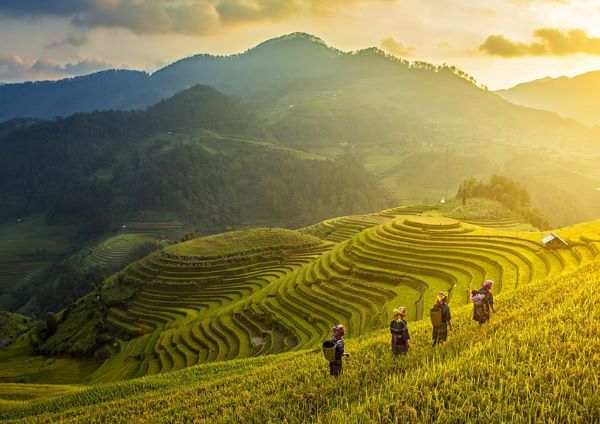
Ripe rice season in Sapa
- Central Vietnam (Bach Ma National Park, Phong Nha – Ke Bang): Dry season months from November to March are recommended for trekking.
- Southern Vietnam (Cat Tien National Park, Ba Den Mountain): Best from December to March, when the weather is cooler and more comfortable.
Read more: 20 Most Beautiful Roads to Conquer When Trekking in Vietnam
Choosing Your Trekking Route and How to Get There
Vietnam is home to diverse trekking routes for all levels of experience. Here are some recommended routes across the country:
Northern Vietnam
- Sapa, Lao Cai: Trek through the Hoang Lien Son Mountains, passing by terraced rice fields and traditional ethnic villages. Sapa offers both short day hikes and multi-day treks, making it a versatile option.
- Ha Giang: Known for its stunning Dong Van Karst Plateau and winding mountain passes, Ha Giang is a challenging trek with rewarding views and opportunities to interact with the Hmong and other ethnic communities.
- Ba Be National Park: Famous for Ba Be Lake and its surrounding limestone mountains, Ba Be is perfect for those looking to combine trekking with a bit of kayaking or boating.
- Mai Chau: Known for its peaceful valleys, rice fields, and stilt houses, Mai Chau is ideal for beginners or those looking for a scenic, low-intensity trek with cultural experiences among local Thai communities.
- Pu Luong Nature Reserve: Just a few hours from Hanoi, Pu Luong offers stunning landscapes with rice terraces, lush forests, and quaint villages. This area is great for moderate-level trekkers who want to immerse themselves in Vietnam’s natural beauty.
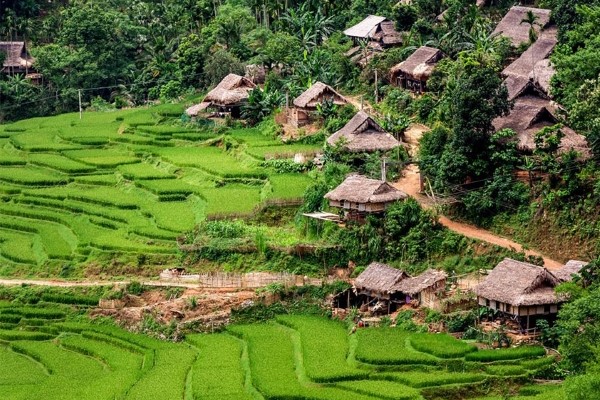
Kho Muong in Pu Luong, Vietnam
Central Vietnam
- Bach Ma National Park: This national park offers several trekking paths through lush forests, waterfalls, and panoramic viewpoints. It’s also an excellent place for spotting rare wildlife.
- Phong Nha – Ke Bang, Quang Binh: Known for its extensive cave systems, including Hang En and the legendary Son Doong Cave. This area is ideal for trekkers seeking both adventure and natural wonders.
Southern Vietnam
- Cat Tien National Park: A lowland forest with rich biodiversity, Cat Tien is home to rare wildlife and offers both gentle hikes and challenging treks.
- Ba Den Mountain, Tay Ninh: The highest peak in southern Vietnam, Ba Den Mountain provides a challenging trek with scenic views from the summit.
How to Get There
Most trekking destinations are accessible via buses, trains, or domestic flights. For instance, you can take an overnight train from Hanoi to Sapa or a bus from Ho Chi Minh City to Cat Tien. Arranging transportation in advance, especially for remote areas, is advisable. Consider joining a guided tour if you’re unfamiliar with the terrain or looking for added safety.
Read more: 48 Exciting Hours in Sapa: Discover the Identity of the Northern Mountain Region from Hanoi
What to Bring for a Successful Vietnam Trekking Trip
Packing wisely is crucial for a successful Vietnam trekking experience. Here’s a checklist of essentials:
Clothing
- Lightweight and Breathable Clothing: Wear comfortable, moisture-wicking clothes to stay cool, especially if trekking in the summer.
- Sun Protection: Long-sleeve shirts and light pants are great for protecting your skin from the sun and insect bites.
- Sturdy Hiking Boots: Choose well-fitted, durable boots with a good grip, especially for rough or slippery paths.
- Hat and Sunglasses: Protect yourself from the harsh sunlight, particularly during the midday heat.
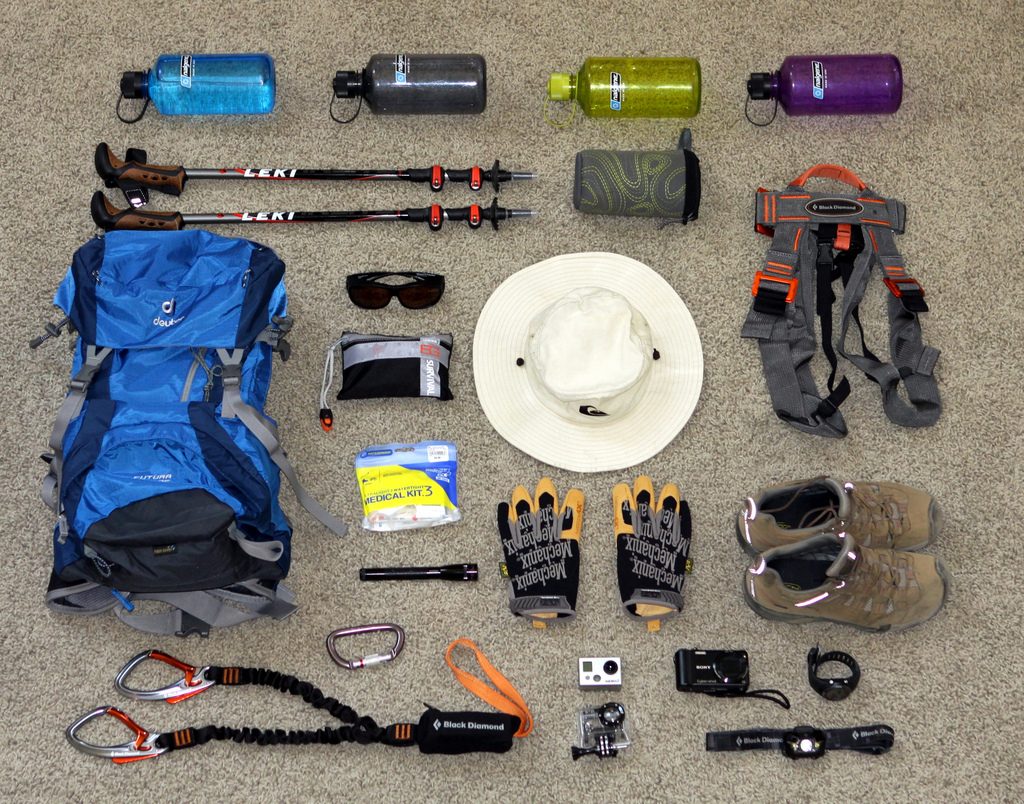
Trekking equipment
Essential Gear
- Backpack: A lightweight, comfortable backpack is essential for carrying water, snacks, and other small items.
- Water and Snacks: Staying hydrated is crucial, particularly when trekking in hot conditions. Bring water bottles or hydration packs, and consider carrying electrolyte tablets or drinks to prevent dehydration.
- First Aid Kit: Include essentials such as band-aids, antiseptic, painkillers, and insect repellent.
- Torch/Flashlight: Useful for early morning or evening treks and essential if you’re planning an overnight hike.
- Trekking Poles: Helpful for maintaining balance and reducing strain on your knees, particularly on steep terrain.
Other Useful Items
- Sunscreen: Use SPF 30 or higher to protect your skin from sunburn.
- Insect Repellent: Essential in jungle areas to keep mosquitoes and other bugs at bay.
- Map or GPS Device: Download maps offline or carry a GPS device if you’re trekking alone in remote areas.
Important Safety Tips for Vietnam Trekking
Safety should be a top priority, especially when trekking in remote or mountainous regions. Here are some tips to help you stay safe during your Vietnam trekking adventure:
Prepare Your Body
Trekking can be physically demanding, so it’s wise to build your stamina with some physical training beforehand. Simple exercises like jogging, hiking, or even long walks can help prepare your body.
Check the Weather Forecast
Vietnam’s weather can change rapidly, especially in mountainous regions. Always check the forecast before and during your trek. If the weather looks unfavorable, consider postponing or altering your plans.
Protect Against Heat and Dehydration
In the summer, heat exhaustion and dehydration are common risks. To avoid these, rest often, stay in shaded areas where possible, and drink water regularly. It’s also helpful to start your trek early in the morning or late in the afternoon to avoid the peak midday heat.
Respect Nature and Local Communities
Vietnam trekking is a beautiful way to connect with nature and local cultures. Practice “leave no trace” principles by avoiding littering and minimizing noise. When visiting rural communities, show respect to the locals and their traditions.
Stick to a Planned Itinerary
Vietnam’s trekking trails vary from well-marked paths to more remote, challenging routes. Make a realistic plan based on your fitness level and stick to it. Inform someone about your itinerary, especially if trekking alone, and avoid detouring to unknown paths.
Follow Safety Instructions and Guidelines
If you’re joining a guided tour, listen closely to the guide’s instructions and follow group safety rules. It’s crucial to stay with the group and avoid venturing off on your own, especially in dense forests or mountainous areas.
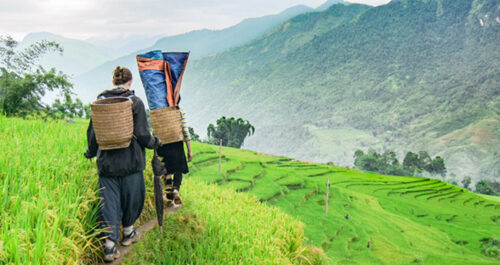
Trekking in Sapa
Vietnam trekking offers a diverse range of trails for every type of trekker, from beginners seeking light hikes to seasoned adventurers eager for a challenge. By choosing the right season, route, and gear, and taking safety precautions seriously, you’ll be able to enjoy the beauty of Vietnam’s landscapes while staying safe and comfortable.
If you’re ready to explore Vietnam’s stunning trails, book a tour with Paradise Travel for an unforgettable trekking experience guided by local experts. Our tours are designed to offer both safety and adventure, with options tailored to your fitness level and trekking goals. Let Paradise Travel guide you to discover the true beauty of Vietnam’s mountains, forests, and rivers – one step at a time.

